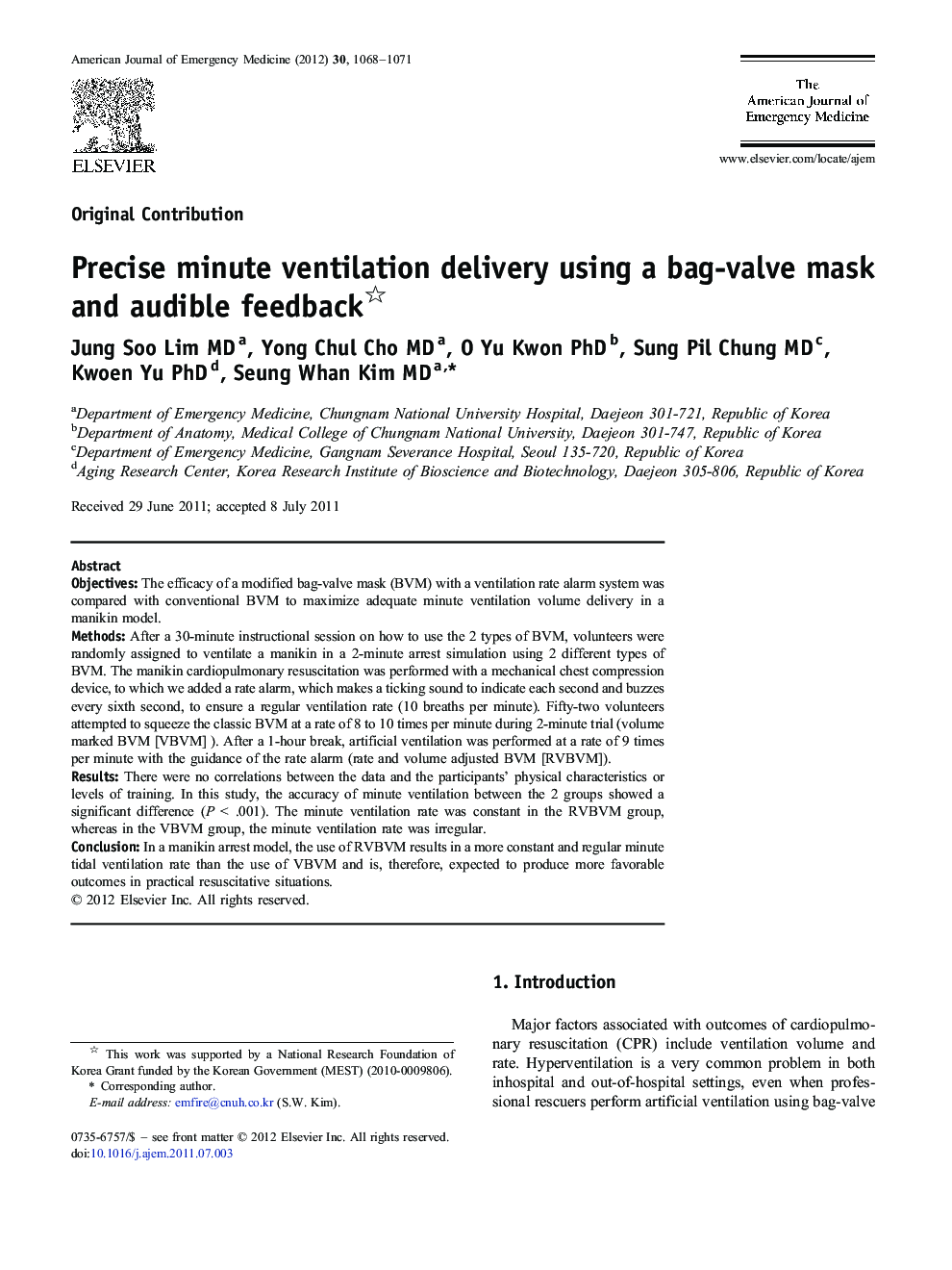| کد مقاله | کد نشریه | سال انتشار | مقاله انگلیسی | نسخه تمام متن |
|---|---|---|---|---|
| 3225227 | 1588137 | 2012 | 4 صفحه PDF | دانلود رایگان |

ObjectivesThe efficacy of a modified bag-valve mask (BVM) with a ventilation rate alarm system was compared with conventional BVM to maximize adequate minute ventilation volume delivery in a manikin model.MethodsAfter a 30-minute instructional session on how to use the 2 types of BVM, volunteers were randomly assigned to ventilate a manikin in a 2-minute arrest simulation using 2 different types of BVM. The manikin cardiopulmonary resuscitation was performed with a mechanical chest compression device, to which we added a rate alarm, which makes a ticking sound to indicate each second and buzzes every sixth second, to ensure a regular ventilation rate (10 breaths per minute). Fifty-two volunteers attempted to squeeze the classic BVM at a rate of 8 to 10 times per minute during 2-minute trial (volume marked BVM [VBVM] ). After a 1-hour break, artificial ventilation was performed at a rate of 9 times per minute with the guidance of the rate alarm (rate and volume adjusted BVM [RVBVM]).ResultsThere were no correlations between the data and the participants' physical characteristics or levels of training. In this study, the accuracy of minute ventilation between the 2 groups showed a significant difference (P < .001). The minute ventilation rate was constant in the RVBVM group, whereas in the VBVM group, the minute ventilation rate was irregular.ConclusionIn a manikin arrest model, the use of RVBVM results in a more constant and regular minute tidal ventilation rate than the use of VBVM and is, therefore, expected to produce more favorable outcomes in practical resuscitative situations.
Journal: The American Journal of Emergency Medicine - Volume 30, Issue 7, September 2012, Pages 1068–1071